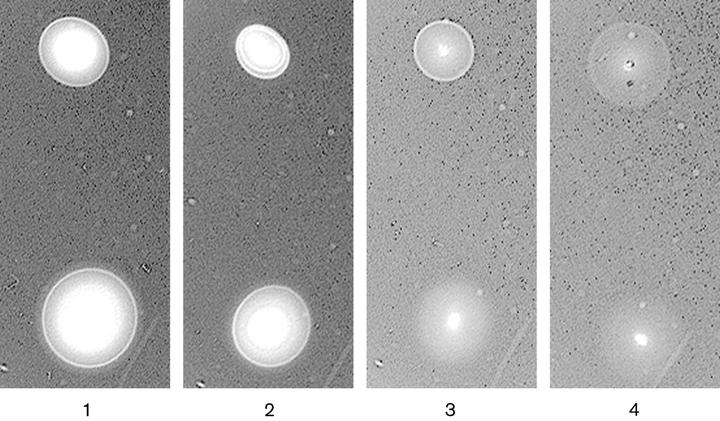Aer and Tsr guide Escherichia coli in spatial gradients of oxidizable substrates

Abstract
The Aer and Tsr chemoreceptors in Escherichia coli govern tactic responses to oxygen and redox potential that are parts of an overall behaviour known as energy taxis. They are also proposed to mediate responses to rapidly utilized carbon sources, glycerol and succinate, via the energy taxis mechanism. In this study, the Aer and Tsr proteins were individually expressed in an ‘all-transducer-knockout’ strain of E. coli and taxis was analysed in gradients of various oxidizable carbon sources. In addition to the known response to glycerol and succinate, it was found that Aer directed taxis towards ribose, galactose, maltose, malate, proline and alanine as well as the phosphotransferase system (PTS) carbohydrates glucose, mannitol, mannose, sorbitol and fructose, but not to aspartate, glutamate, glycine and arabinose. Tsr directed taxis towards sugars (including those transported by the PTS), but not to organic acids or amino acids. When a mutated Aer protein unable to bind the FAD cofactor was expressed in the receptor-less strain, chemotaxis was not restored to any substrate. Aer appears to mediate responses to rapidly oxidizable substrates, whether or not they are effective growth substrates, whereas Tsr appears to mediate taxis to substrates that support maximal growth, whether or not they are rapidly oxidizable. This correlates with the hypothesis that Aer and Tsr sense redox and proton motive force, respectively. Taken together, the results demonstrate that Aer and Tsr mediate responses to a broad range of chemicals and their attractant repertoires overlap with those of specialized chemoreceptors, namely Trg (ribose, galactose) and Tar (maltose).